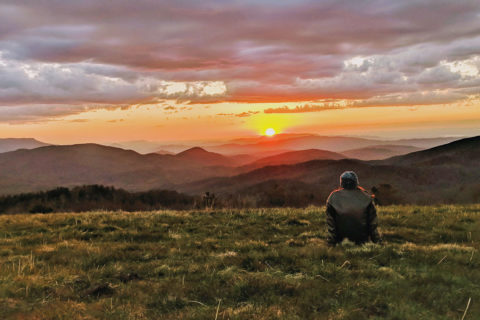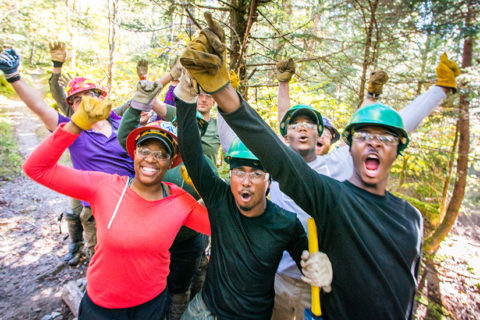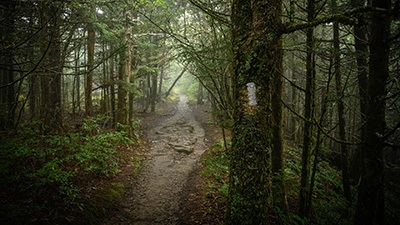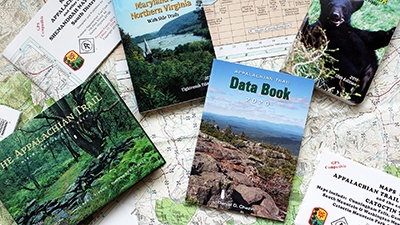by Alivia Acosta, ATC National Service Coordinator
Re-Engaging During COVID-19
Storms throughout the winter usually leave the Appalachian Trail inundated with trees that have fallen across the treadway – known as blowdowns. Therefore, during any typical spring volunteers along the length of the Appalachian Trail are usually kicking their maintenance season into gear in preparation for the hiking season. Scott Birchman, Trail Chair and Vice President of the Blue Mountain Eagle Climbing Club (BMECC), explains “We had 75 blowdowns in about 11.4 miles.”
Similar to many things in our lives, this year’s maintenance season was drastically impacted due to the COVID-19 global pandemic when by April 2020, most volunteer activities were temporarily suspended by clubs in an abundance of caution, in response to land manager stand-down requests, or both. By June 2020, a task force composed of relevant and experienced A.T. partners created Volunteer Protocols During COVID-19 in which A.T. volunteers and their maintaining clubs could establish a safe return to the Trail. BMECC was able to safely return to their responsibilities as A.T. volunteers Birchman explains, “We cleared [all 75 blowdowns] in two days with four or five sawyers those days. It was amazing how fast everyone came to help, it was like everyone else was waiting to get out there.”
Volunteers with Trail maintaining clubs have not been the only folks utilizing the adaptive recovery procedures produced by the Adaptive Recovery Task Force in order to return to working on the Appalachian Trail. A few conservation corps such as the Vermont Youth Conservation Corp (VYCC) have been excited to safely continue their work.
“During the pandemic, as more and more people flocked to the outdoors, conservation and trail work became more important than ever. Our crews were really excited to be able to make a positive impact during a really challenging time and it is always exciting to work on the historic A.T.!,” explained Keith Warner, Vermont YCC Program Coordinator.
VYCC ended up working on a section of the A.T. between Kent Pond Boat Ramp and Thundering Brook Road where the crew disassembles rotting turnpikes and puncheon and then hauled in new lumber to build newer structures. They also added stepping stones through muddy areas, added rock retention structures to prevent erosion, and closed off a few social trails with large boulders they moved to serve as deterrents to those paths.
Warner goes on to explain that VYCC followed state COVID-19 guidelines, worked outdoors, and used scaled back, single day-based young adult programs to mitigate risk. He said crews have been wearing masks when working in close proximity and that daily health screenings were being conducted.
Other clubs, such as the Georgia Appalachian Trail Club (GATC), began to discover that their need for an adaptation in volunteer recruitment started well before the start of any work day. Historically, GATC has required new members to attend a new members orientation, join one work trip, and participate in one other club event of their choice. Rick Dicks, GATC Membership Director, reports that while GATC has not changed their membership requirements, the club has changed how new members can meet those requirements. In addition to converting orientation sessions into a teleconference, new online “town hall” meetings on a variety of topics serve as an option for the elective option of the new member process.
When it comes to the required work trip, pre-COVD GATC offered a monthly meet-up where an average of forty people might have gathered to develop and expand upon their trail maintenance expertise. Now, GATC is offering one-on-one work trips where new members can work alongside qualified trail maintainers in order to develop their skills. Dicks goes on to explain that fifty new members have gone through this mentor process and that it is proving to be more successful in engaging new members with trail maintenance.
Ultimately, GATC has seen the same amount of members and member engagement as they did prior to COVID-19. Dicks says that the disappointment of not being able to see friends right now is a drawback to current circumstances, but that things have changed for the better in other ways considering the new ease in scheduling orientations, and greater increase in interest and understanding of trail maintenance.
A recent spike in outdoor recreation observed during the pandemic also brought about its own challenges. Popular day hiking areas such as Max Patch in N.C. were bombarded with resource-threatening use. In late October, Summit Coffee located in Asheville, N.C. reached out to ATC in hopes of partnering for a volunteer clean-up of Max Patch. After connecting Summit Coffee with the Carolina Mountain Club (CMC), volunteers from both organizations were able to gather together – masked and socially distant without sharing tools – in multiple small groups for a day of Trail restoration and litter clean up.
Returning to the Trail for field work continues to remain a personal choice, nested within an organization’s decisions for re-engagement and based on the Adaptive Recovery Protocols. For some organizations, work didn’t fully resume. ATC’s volunteer trail crews, for instance, ended up being shelved completely in 2020.
For volunteers who were able to safely re-engage with responsibilities this year, thank you.
For volunteers who decided to continue to stand-down or significantly adapt their duties to account for their own safety or the safety of ones they love, thank you.
While this year has brought many challenges and changes for us all, we can be assured that the connection and commitment to the Trail continues, and that our shared care of it constitutes the soul of the A.T. We hope for a year ahead that offers greater opportunities and reduced risk in pursuit of making the trail a better, safer, enjoyable experience.





